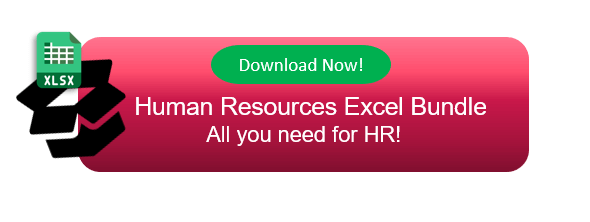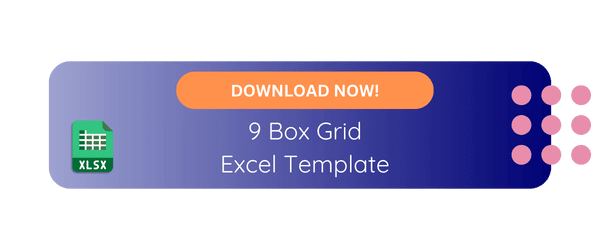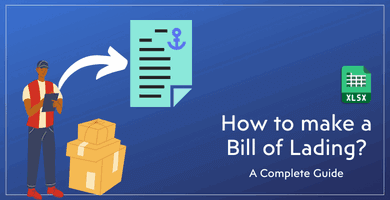Understanding the Basics of Applicant Tracking System: Complete Guide for HR
The Applicant Tracking System (ATS) is the new name of technology in modern recruitment. Definitely, the ATS revolutionizes the way organizations search for, assess, and hire new talent.
Table Of Content
1. What’s Applicant Tracking System?
2. How do the Applicant Tracking Systems work?
3. Key features of an applicant tracking system
4. Why to use ATS?
5. ATS vs CRM
6. The Future of Applicant Tracking Systems
7. An Example for Applicant Tracking Systems
8. Conclusion
This article aims to explain the Applicant Tracking System from all aspects. Firstly, we’ll provide an overview of its definition, functions, key features, and reasons for its widespread adoption. Additionally, we will ATS to Candidate Relationship Management (CRM) systems, and discuss the future ATS technology developments.
1. What’s Applicant Tracking System?
An Applicant Tracking System (ATS) is a software application that simplifies and streamlines the hiring process from job posting to candidate hiring.
![]()
So, it is primarily used by enterprises and recruitment agencies. The system acts as a central hub for posting job vacancies and efficiently organizing and sifting through received applications.
Brief History of ATSs:
ATS was created to handle the increasing volume of job applications in a more organized and efficient way. The internet and online job boards further exacerbated this issue. So now, the ATS solves this problem by automating the process of resume screening and management.
HR departments were previously full with paper resumes in the past . Now with ATS technology, there has been automation in many aspects of the process. For instance, it can post job openings on multiple platforms, parse resumes for relevant information, and manage candidate communications.
![]()
Additionally, an ATS collects and stores resumes in a candidate database, enabling recruiters to search for candidates using keywords related to job requirements, such as skills, education, and previous job titles. This system saves time and maintains a structured recruitment process. It ensures that no candidate is overlooked and identifies the most suitable candidates for hiring.
Thus, Modern ATS solutions handle applications, schedule interviews, send automated emails to candidates, and generate reports on the recruitment process. ATS systems are user-friendly, making it easier for recruiters to manage tasks and candidates to submit applications and track progress.
Large companies use ATS as a standard practice, and smaller businesses are adopting it to improve recruitment efficiency. The significance of this tool lies not only in its ability to save time and reduce administrative burdens but also in its role in promoting fair hiring practices. It achieves this by minimizing human biases in the initial screening stages.
2. How do the Applicant Tracking Systems work?
Firstly, let’s try to understand how Applicant Tracking Systems (ATS) work. This is very imortant for both the recruiters and job seekers. The ATS has several key stages that streamline recruitment and identify the best candidates.
1. Job posting and Distribution:
The HR team or recruiter uses the ATS to create and post job listings. The system can distribute job openings to multiple job boards, social media platforms, and the company’s career site from a single dashboard. This broad distribution helps attract a diverse pool of candidates.
2. Receiving Applications:
Job seekers’ resumes, cover letters, and application forms are uploaded into the ATS when they apply for positions.
3. Resume Parsing and Screening in Applicant Tracking System:
Also, parsing the resumes is one of the most important features of ATS tools. This involves extracting information from resumes, such as work experience, skills, education, and personal contact details, and organizing it into a structured format. The system screens resumes against job requirements using algorithms to rank candidates based on their relevance to the job criteria.
4. Applicant Ranking and Filtering:
Recruiters can then filter through the ranked list to identify those who best match the job requirements. This step reduces the manual effort required to review each resume.
5. Communication and Workflow Management:
Also, ATS platforms often have tools for managing communication with candidates. For instance, automated emails can notify applicants of their application status, request additional information, or schedule interviews. The system can also assign tasks and reminders to the recruitment team, ensuring that no candidate is overlooked.
6. Interview Scheduling and Feedback Collection:
Some ATS solutions provide integrated scheduling tools for candidates to select interview times that work for both parties. Feedback from hiring managers and interviewers can be collected and stored within the ATS after interviews, aiding in the decision-making process.
7. Offer and Onboarding:
Finally, when a candidate is selected, the ATS can help with the offer letter process and, in some cases, the initial stages of onboarding by collecting the required documents and information from the new hire.
3. Key features of an Applicant Tracking System
An Applicant Tracking System (ATS) has several features that optimize the recruitment process. These features help manage applications more efficiently and enhance the experience for recruiters and candidates.
What are the key features for an applicant tracking system?
- Resume parsing and storage
- Job posting
- Distribution of postings
- Candidate screening
- Ranking the applicants
- Automation
- Compliance management
- Candidate Relationship Management
- Mobile accessibility
- User-friendly interface
So, these are the some of the key features that you can look for in an ATS if you’re looking for the best solution for your talent hunt. Also, you should compare the prices and overall costs of setting up an applicant tracking system for your recruitment process.
4. Why to use Applicant Tracking System tools?
Implementing an Applicant Tracking System (ATS) can transform the recruitment process for organizations. That’s why, it offers numerous benefits that streamline operations and enhance hiring outcomes.
![]()
Companies should consider using an ATS for the following compelling reasons:
a. Efficiency in Handling High Volume Applications:
Manually sorting through each resume can be overwhelming and impractical for businesses that attract a large number of applicants. An ATS automates the screening process, managing and filtering through hundreds or thousands of applications to highlight the most qualified candidates.
b. Improved Quality of Hire:
This improves the quality of hire by ensuring that only the most suitable applicants are shortlisted, matching their skills and experiences with job requirements. The precision of the process brings in talent that is well-aligned with the company’s needs.
c. Reduced Time-to-Hire:
ATS tools try to automate repetitive tasks. This may include posting jobs, sorting resumes, and scheduling interviews, and so on. This reduction in time-to-hire improves the productivity of the recruitment team and enhances the candidate experience by ensuring timely communication and feedback.
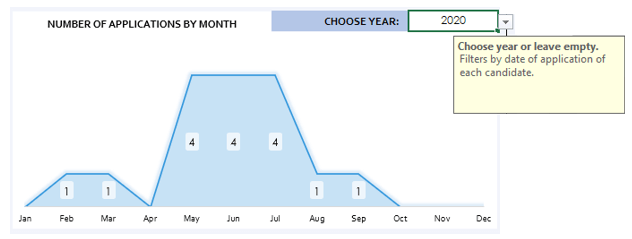
d. Enhanced Candidate Experience:
With a user-friendly ATS, you can greatly enhance the candidate experience, which in return improves your employer branding.
e. Cost Savings with Applicant Tracking System:
Additionally, automating the recruitment process with an ATS can lead to cost savings by reducing the need for additional staff to manage hiring tasks. ATSs are efficient and speedy, resulting in faster filling of positions and reduced costs associated with vacancies.
f. Data-Driven Decision Making:
An ATS offers built-in reporting tools that provide valuable insights into the recruitment process. These insights include sources of the best candidates, time-to-hire metrics, and recruitment bottlenecks.
g. Compliance and Record Keeping in Applicant Tracking System
An ATS tool helps maintain compliance with employment laws and regulations by standardising the recruitment process and securely storing candidate data. This feature is crucial for mitigating legal risks and ensuring fair hiring practices.

h. More powerful Employer Brand
Additionally, if you have a smooth and efficient recruitment process, this will also positively affect your employer brand. So, an ATS helps companies interact professionally and engagingly with candidates, contributing to a positive company image.
i. Scalability:
It is scalable, meaning it can easily adapt to increasing volumes of applications and evolving recruitment strategies as a company grows.
j. Collaborative Hiring in Applicant Tracking System
Additionally, it facilitates collaborative hiring. ATS platforms typically have collaboration tools that allow team members to share feedback and make collective hiring decisions.
This approach ensures a more comprehensive evaluation of candidates and alignment with team and organizational goals.
5. Applicant Tracking System vs Candidate Relationship Management
In the realm of talent management, Applicant Tracking Systems (ATS) and Candidate Relationship Management (CRM) systems are essential tools. Although related, they serve distinct functions. It is crucial for organizations to understand the differences between ATS and CRM systems to leverage each effectively in their recruitment and talent management strategies.
What is the difference between ATS and CRM?
Here’s a summary table for you to compare ATS and CRM in hiring:
| APPLICANT TRACKING SYSTEM | CANDIDATE RELATIONSHIP MANAGEMENT |
| Primary Function: Automates the handling of job postings, applicant tracking, resume parsing, and the screening of candidates. | Primary Function: A CRM system for recruitment focuses on building and managing relationships with potential candidates. |
| Key Features: Resume parsing, job posting distribution, candidate screening and ranking, interview scheduling, and compliance management. | Key Features: Candidate engagement through email campaigns, event management, talent pool segmentation, and analytics on candidate interactions. |
| Benefit: Ability to save time and resources in the recruitment process by automating administrative tasks and efficiently managing large volumes of applications. | Benefit: Ability to create a talent pipeline for future hiring needs. It enables companies to maintain contact with passive candidates. |
In summary, ATS and CRM systems are both valuable tools in modern recruitment strategies, but they serve different stages of the talent acquisition process. An ATS focuses on efficiently managing the hiring process, while a CRM emphasizes building relationships with potential candidates. Together, they provide a comprehensive approach to attracting, hiring, and retaining top talent.

6. The Future of Applicant Tracking Systems
The future of Applicant Tracking Systems (ATS) is continuously evolving due to advancements in technology and changing dynamics in the job market.
We’ll talk about some of the main topics that will shape the future of Applicant Tracking Systems
AI and Recruitment:
Artificial Intelligence (AI) is one of the most populat topics of today. So, the ATS is also set to be revolutionized by AI, which will automate more complex tasks such as interpreting resume nuances, conducting preliminary interviews through chatbots, and even predicting candidate success in specific roles.
This technology can significantly improve screening efficiency and candidate selection quality.
Predictive Analytics:
Also, the ATS will use data analytics to provide insights into hiring needs, candidate success, and turnover rates. These insights can help organizations plan their talent acquisition strategies more effectively and identify potential issues before they become problematic.

Video Resumes:
The adoption of video resumes and cover letters is also expected to rise as the workforce becomes more digital. ATS systems may include video submission evaluation functionality, enabling candidates to display their personalities and soft skills beyond what is possible in a traditional resume.
Increased Candidate Experience:
Future ATS platforms will prioritise the candidate experience, making the application process more engaging and interactive. The text discusses the potential benefits of advanced algorithms and AI in the recruitment process, including personalized feedback, real-time communication features, and more transparent application tracking for candidates.
Diversity in Workplaces:
It also highlights the importance of promoting diversity and inclusion, with future ATS versions expected to include tools such as blind screening features and bias detection in job descriptions to reduce unconscious bias.
Integration with Other HR Systems:
Additionally, ATS will integrate more seamlessly with other HR systems, including onboarding, performance management, and employee engagement platforms. This integration will provide a more unified view of the employee lifecycle and facilitate data-driven decision-making.
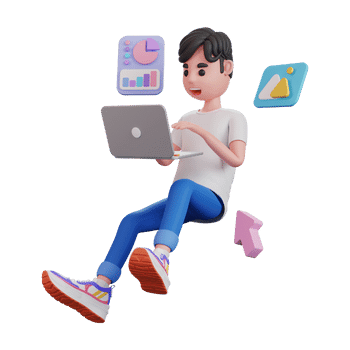
Mobile World and Social Media:
Additionally, ATS platforms will continue to improve their mobile interfaces to accommodate the increasing use of smartphones for job searching and applications. This optimization will make the application process accessible and user-friendly on any device.
The ATS will enhance capabilities for sourcing candidates directly from social media and professional networking sites, enabling recruiters to reach passive candidates more effectively and leverage social media analytics for targeted recruitment campaigns.
Here are the main topics in the face of applicant tracking systems. Now, let’s continue with an example.
7. An Example for Applicant Tracking Systems
Finally, we’ll conclude with an ATS example from our portfolio. We have a unique tool to track candidates and monitor all hiring process.
>> Download Recruitment Tracker Excel Template
This tool will include the key features of an ATS:
- Candidate storage
- Vanacy monitoring
- Resume parsing
- Candidate screening
- Applicant Filtering and ranking
- Multi-recruiter environment
- Analytics for hiring process
>> Download Recruitment Tracker Excel Template
And unlike the expensive third-party softwares, this tool is:
- Provided in Excel and Google Sheets
- Instant download
- Ready-to-use
- No learning curve
- No installation needed
You can also see our shorts video on this Hiring Tools:
8. Conclusion for Applicant Tracking System
In the world of recruitment, Applicant Tracking Systems (ATS) are a significant leap forward in how organizations approach talent acquisition. These systems are dynamic and ever-evolving.
Throughout this article, we have explored how ATS can improve your recruitment process.
In conclusion, As we look to the future, the role of ATS in shaping the next generation of recruitment practices is not only exciting but also essential for those committed to attracting, hiring, and retaining the very best talent.
Hope you enjoy our guide!
Recommended Readings:
Tips for Building an Employment Application Form that Will Make Recruiting Easier
20 Most Important HR KPIs & Metrics to Track
Employee Performance Evaluation Process: Painless and Productive Performance Reviews
